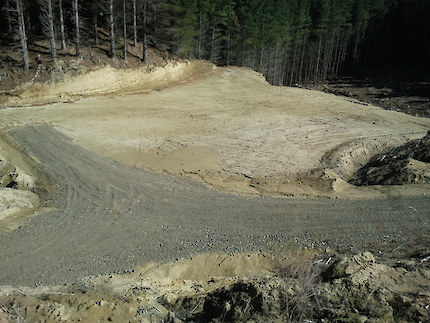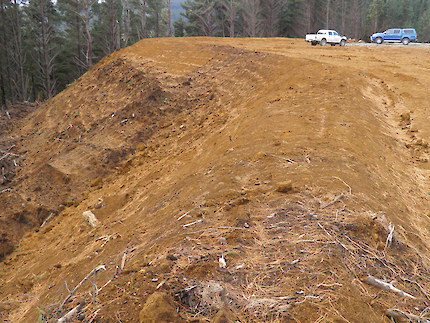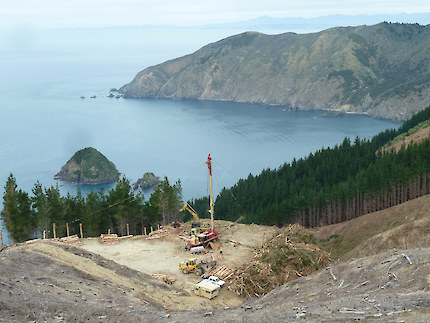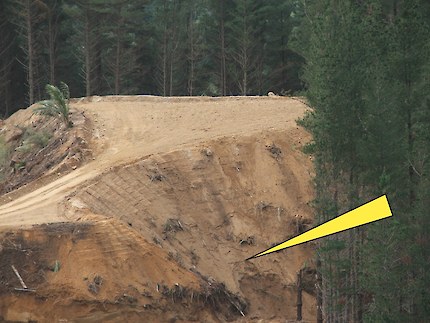A well-constructed landing is essential. It must meet operational needs. It also must be built to last and not be a major risk to the environment.

- The site is well prepared. For example, stripped and benched
- It is constructed to the right size/area specifications
- It uses the lie of the land to increase the workable area so that earthworks are reduced
- Water is directed away from the fill. The ‘fall’ is towards the stable ground
- Trucks can turn around, and loggers have parking close by

- The landing has a visible bench and has been compacted. The fill is stable
- It has well-constructed water control. For example, berms and water draining away from the fill
- The fill is free of stumps and woody debris

- Small landings work well if carefully planned and constructed

- Stumps and woody debris are through the fill
- The fill is too steep; slippage can already be seen at the toe of the fill (see arrow)
- Drainage is across the narrow access road
- During harvesting when the water control will be damaged, the fill could erode